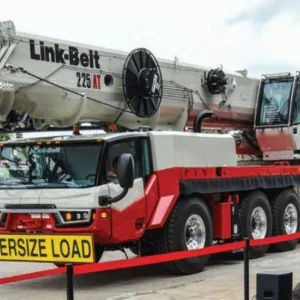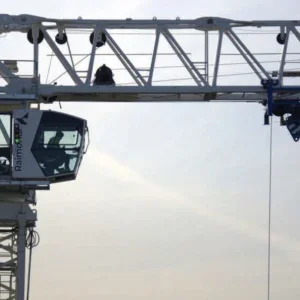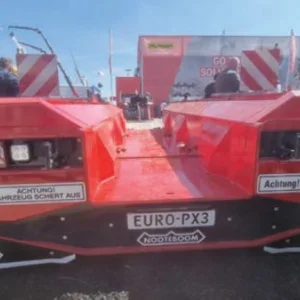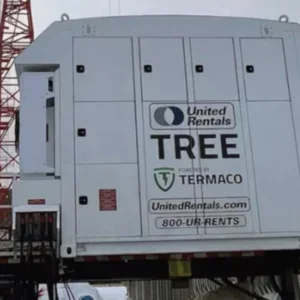In March 2013, crane manufacturers’ group the FEM released a complementary rule to the EU mobile cranes standard, EN 13000. The rule defines the function of an event recorder, and the minimum data it will record.
The rule explains an event recorder is used to monitor and record load-related data and geometric information when triggered by occurrences such as errors, bypasses, overloads and configuration changes. It stores a fixed amount of data in its memory, overwriting it from old to new as the memory fills. It is typically part of a data logger, which also includes telematics, engine data, and other information from the crane’s CANbus sensor network.
The document makes clear the data belongs to the crane owner, but adds that they might involve the manufacturer for further analysis.
While the data may belong to the crane owner, that doesn’t mean they have complete control over its use: the terms of a warranty may mean they are asked for it when making a claim; a court may order its release.
Transatlantic rift
Attitudes to the presence of an event recorder with long-term memory, reflect the familiar transatlantic rift between those in Europe who see such systems as a way to ensure a level playing field for safe crane owners, and those in the USA who believe the industry is safest when the operator is king.
Bill Smith, EVP of US construction services insurer NBIS, explains the problem as many in the US see it: "In general, an event recorder is a good thing. If it’s like an airplane, with a 24-to-48 hour loop, that’s fine. If something happens, you can get data on the crane, to identify the cause: that’s good, for anyone injured, and for the crane owner.
"The problem with data loggers with a long time span, is that people read them in other ways. There’s an overload of cranes every day: say, when you’re rigging the crane. Some overloading is caused by the operator. Some is caused by the load moving. Lifetime data may have nothing to do with an accident, but if people can get access to that data, they can say the crane was being run badly. People will take any data available, and try to twist it."
Søren Jansen is director of ESTA, the European crane owners’ association, and an industry consultant. In the latter role, he’s seen how this data may be used: "More and more manufacturers are requesting a print out from the event recorder if they are processing a warranty claim related to the structural part of a crane."
Jansen cites a couple of examples of how, as a consultant, he’s seen this data used. In one case, a crane owner made a warranty claim when a boom broke. The manufacturer requested the event recorder data and showed that the crane had been working with the LMI disabled, over capacity. The claim was dropped.
In another case, Jansen was called in to advise an insurance company in an accident case. He told them to request the event recorder data, and was able to show that during the lift the LMI had been disabled, while the crane continued lifting. The crane owner’s insurance claim failed.
Jansen doesn’t see this as a problem for crane owners: "It’s good for the industry, which has the image of being a dangerous place to work. The cranes of today are safe, if you use them properly. The cowboys should know, they are on record."
Jansen cites examples of crane users who have brought cheaper, smaller, cranes, and then routinely worked over capacity with the LMI disabled, offering cheaper rates than those who stay within the rated capacity.
Smith is sceptical of examples like this: "Nobody buys a cheaper crane with the philosophy they’ll outbid their competitor by overloading it. Everyone nowadays runs their cranes within the guidelines of the manufacturer."
The gap between those in Europe who welcome the availability of event recorders, and those in the US who are suspicious of how data will be used against crane owners, is likely to remain. However, they are now in place on most modern cranes, and owners will have to expect their use.
A training aid, not a threat
The mobile crane industry should expect to follow in the path of the loader industry, where, particularly since the adoption of EN 12999 requiring the crane’s stability function to be monitored, data logging and event recording have become standard.
Experiences here suggest many manufacturers would prefer to use the data recorded in a collaborative, rather than combative, fashion.
Bryan Flintham is technical manager of Atlas Cranes UK. He says, "We do record some usage information within the control system on most (but not all) models. So far we have not used any of this information in consideration of warranty claims. To date, we have not used, or been asked to provide, any downloaded usage information to look into accidents.
"Where we would use usage information is, for example, where a structural problem were identified during a thorough examination: we would look at the usage profile to help make a judgement on the adequacy of inspection regimes for this crane and similar cranes on similar duties. Recording and analysing usage information has value when reviewing existing designs or proposing new ones."
Paul Duke, service manager at Palfinger dealer T H White agrees: "We don’t reject claims, we use the data to educate users." Les Drage, technical manager, adds, "We use it as a protective tool."
Ian Roberts, MD of HMF UK, says that event recorder data can be an aid to crane owners, rather than a threat. The company’s Crane Manager system records data from when the crane is first installed, through every job. Roberts says, "In normal life, it records every lever push. We monitor the tilt of our trucks, not the stabiliser position. So we can see if we have an ‘excitable’ operator.
"Every time a service engineer goes to the crane, he downloads the report. We can see cycles, how hard he’s using it, and see if the operator is trying to use it when locked out.
"We don’t routinely look to use it for warranty rejections. If we turned up to a crane, and the safety systems had been overridden, we might, but our customers are very good. On all the new cranes where these systems are present, the owners are professional, and won’t try to override safety systems.
"It is more that it shows us the ability of the operator. So it’s very good for training. We had one example recently, where an agency operator had been trying to use a crane without his legs down. We were able to see that, and say he needed more training."






